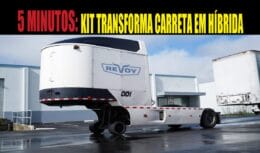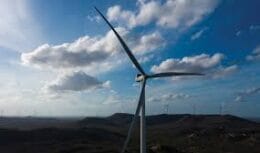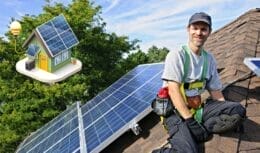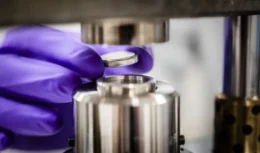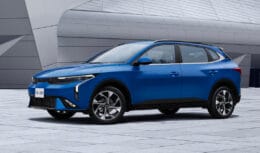
Wind Power: The world's largest developer of offshore wind farms pledges to recycle large wind turbine blades
Orsted, the world's largest developer of offshore wind farms, said last Thursday, June 03, that it has a clear responsibility to the environment, and that it will recover, reuse or recycle all turbine blades in its global portfolio of wind farms once they are dismantled.
Read also
- General Electric presents gigantic floating turbine that promises to revolutionize the implementation of wind energy in the world
- WEG, one of the largest manufacturers of electrical equipment in the world, beat the profit and revenue consensus and reports guaranteed sales of wind turbines until the end of 2022
- Job vacancies to work in the factories of Baterias Moura, the leader in the manufacture of automotive, nautical, logistics and telecommunications electric accumulators
- 60% of natural gas in Brazil returns to offshore fields due to lack of structure and thermoelectric plants pay in dollars for the input, the electricity bill skyrockets and Brazilians “pay the bill”
The question of what to do with wind turbine blades when they are no longer needed is a headache for the industry. That's because the composite materials in the blades are difficult to recycle, and Orsted has observed that most blades, once disassembled, end up in landfills.
As governments around the world try to increase their renewable energy capacity, the number of wind turbines will definitely increase.
The European Commission, the EU's executive arm, has said it wants capacity to reach at least 50 gigawatts by 2030 and 300 GW by mid-century alone.
The UK, meanwhile, wants its offshore wind capacity to reach 40 GW by 2030. Meanwhile, the US is also looking to significantly increase its offshore wind capacity this decade.
Given the above, the problem of what to do with turbine blades will become even more urgent in the future. For his part, Orsted explained that he would temporarily store the wind blades that are out of order in case he finds a solution to recycle them.
Recycling wind turbine blades: an increasingly important issue
The fate of turbine blades, once they are disembodied, has become a major challenge for the industry. Several large companies involved in the sector have been trying to find solutions to the problem in recent years.
For example, in January 2020, wind energy giant Vestas said its goal was to produce “zero waste” wind turbines by 2040.
In turn, GE Renewable Energy and Veolia North America signed a multi-year agreement last December to recycle blades extracted from onshore wind turbines in the United States.
More recently, it was announced that a collaboration between academia and industry would focus on recycling fiberglass products, a move that could eventually help reduce waste produced by wind turbine blades.
Wind farm owners also want to have a plan for what to do with their products when they reach the end of their useful life.
Orsted, Vestas, LM Wind Power and GE Renewable Energy are part of the consortium DecomBlades, an initiative focused on recycling blades.
Big business
When a wind blade ends up in a landfill or is incinerated, it is a waste of resources, and opportunities are also being lost. There is a large market for solving the end-of-life challenge of wind turbine blades, and the market will be significantly larger in the coming years.
Currently, only a small portion of the world's compost is recycled, this is particularly true for the wind turbine industry.
There are factories that deal with the recycling of composite materials, but many more are needed to handle today's quantities and what we will see in the future.
This would solve the current dilemma regarding recycling wind turbine blades, but it will also solve much bigger challenges for other industries, and has the potential to become big business.
Industrialized decommissioning, in which we can consider all aspects, is a business that has enormous potential, but requires the collaboration and will of the entire sector.

